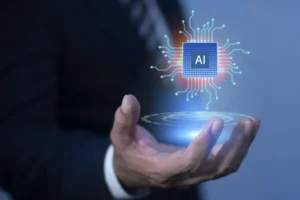Enterprise Asset Management: Top Things to Know

Expanding the company’s scope of operations necessitates organizing the available resources and utilizing them effectively. Enterprise asset management (EAM) encompasses a set of practices aimed at controlling physical assets to ensure their availability at any given moment. Avoiding bottlenecks and dealing with workflow inefficiencies may be challenging without deploying specialized applications.
EAM facilitates reducing downtime, inefficient equipment usage, and understocking. Embracing time-tested practices is necessary to manage physical resources from the beginning to the end and adhere to safety policies to avoid fees.
What is Enterprise Asset Management?
EAM is an umbrella term describing programs, services, and methods that let organizations manage available resources. The main objective is to improve asset utilization and diminish disbursements. When implementing such solutions, firms strive to optimize the following operations:
- Equipment maintenance
- Resource planning
- Inventory control
- Regulatory adherence to environmental health and safety (EHS) policies
- Scheduling
Top-level analytics tools facilitate tracking assets within large systems and utilize information received through sensors to allocate resources to where they are needed. Leveraging artificial intelligence (AI) enables businesses to quickly analyze info and make swift decisions to keep inventory items in a working state.
Even though the term EAM is frequently used to describe a computerized maintenance management system (CMMS), some notable distinctions set them apart. As a narrow term, CMMS refers to centralized access to statistical data, reports, product descriptions, etc. Such practices are suited for automating a limited number of tasks, whereas EAM is an all-encompassing approach devised to control assets from their first usage to their disposal.

We are confident that we have what it takes to help you get your platform from the idea throughout design and development phases, all the way to successful deployment in a production environment!
The Evolution of EAM
Initially, if a company wanted to integrate and utilize an enterprise asset management system, it deployed them on-premises. However, using various types of such systems to access specific features was inefficient and labor-consuming. These systems operated independently, which often resulted in information compartmentalization and made it challenging for managers to overview the whole set of operations related to a tool’s deployment.
Specialists working in the office and in the field did not have access to the whole information about the condition of a tool. They had to analyze information, work with paper documents, and manually compare added data, which resulted in inaccuracies.
As there was no immediate access to real-time updates, it was impossible to repair equipment in time, which resulted in prolonged delays, frequent malfunctions, limited productivity, and low ROI.
Using a cloud platform allows firms to collect data from sensors, synchronize it across systems, and access it immediately. The seamless functioning of such solutions becomes possible through the usage of new technologies:
- AI: Analyzing massive sets of data is easier using algorithm-driven apps;
- Supply chain management (SCM): Employees analyze insights about a product’s performance and eliminate logistic issues;
- Imaging: Using drones, satellites, and LiDAR methods, companies visually inspect the assets they control.
- Internet of Things (IoT) sensors: When attached to assets, they transmit data instantly.
In addition, firms leverage other technologies to trace the usage of tangibles and use them to maximize gains.
Why Deploy Enterprise Asset Management Systems
The significance of EAM lies in the fact that it enables companies to fully control the usage of an inventory and make repairs and upgrades in time. Regardless of the sector, deploying such solutions lets firms manage thousands of items, including vehicles, tools, and pipelines. Let’s consider the main reasons to leverage EAM and make it an integral part of a workflow:
- Centralized access to information: Utilizing CMMS, managers accurately determine the location of tools and make an inventory easier to audit.
- Proactive problem solving: By implementing preventive measures, companies reduce maintenance costs and ensure the process continuity. It enables them to avoid issues disrupting operations.
- AI-driven monitoring: Organizations remotely assess the state of resources and get notifications about potential issues.
- Increased uptime: Collecting data from IoT devices enables firms to prolong the usage of physical resources.
- Infrastructure maintenance: By deploying time-tested practices, businesses extend the means of production lifecycle and achieve higher ROI.
- Unified asset management: Using centralized solutions, employees manage tools of different types, which leads to increased process standardization and unification.
Utilizing new technologies enables companies to embrace efficient practices of maintenance and resource tracking to avoid unnecessary expenses.

The Principles of EAM Systems
Modern EAM software is hosted in the cloud, which accounts for better security and streamlined integration of third-party apps. Ensuring the stable functioning of such solutions requires organizations to adhere to widely-used practices. EAM includes multiple steps:
- Data collection and storage: Staff members store gathered information remotely and manage it using centralized tools. They gain actionable insights, which enables them to streamline processes, improve the performance, and identify the areas that require attention.
- Strategy development: Enhancing productivity necessitates estimating risks and preventing asset failures using predictive analytics tools based on ML algorithms. Following maintenance guidelines, companies maximize asset uptime.
- Regular inspections: Scheduling maintenance allows companies to quickly address issues and ensure the continuing equipment availability.
- Upgrades: Firms may expand EAM system functionality by integrating additional services. Using location data, they perform inventory mapping, which allows workers to access assets without delays.
Even though EAM solutions facilitate task automation, they require supervision and improvement to function without interruptions and help companies use the available resources with high efficiency.
The Best Practices of EAM
Increasing an asset lifecycle requires considering many factors that impact its performance. When implementing EAM systems, businesses combine time-tested and innovative approaches to achieve better outcomes. Read on to learn about the most result-yielding approaches to handling resources.
- Work management: EAM solutions should be configured to deal with scheduled and unplanned workloads to eliminate bottlenecks.
- Preventive repairs: Instead of trying to fix issues that have already affected a workflow, a firm should schedule maintenance to avoid major failures.
- SCM practices: Using IoT, enterprises should link EAM tools with SCM systems to ensure the uninterrupted functioning of a supply chain.
- EHS risk reduction: Implementing incident analysis practices, firms mitigate threats and choose efficient strategies to deal with them.
- Cloud storage: Reducing expenses requires using software as a service (SaaS) solutions, deploying products in the cloud, or using a hybrid mode. It allows organizations to avoid being affected by issues with on-premise infrastructure.
- Mobile devices: Using smartphones, workers document the condition of the tools, scan inventory items, and streamline collaboration.
- AI-powered analytics: Algorithm-driven tools facilitate discovering pathways to process optimization and automating processes.
Saving money allows companies to allocate more funds to research and development. Using time-tested and innovative practices is the only way to get an edge and maintain relevance in highly competitive industries.
Real-World Applications of EAM
When hosted in the cloud, enterprise asset management systems allow users to expand the amount of storage and pay only for the computing resources they utilize. Reliable service providers regularly upgrade EAM systems, which allows firms to access advanced functionality and leverage the newest technologies without significant investments. EAM solutions are utilized across many industries:
- Manufacturing: Whether a business wants to establish a stronger presence in the automotive sector, defense industry, or other niches, deploying EAM will enable it to control product lifecycle with high efficiency.
- Transportation: Integrating inventory management software and apps with tools that facilitate tracking information about stocks facilitates solving logistic issues. EAM systems can be configured to analyze driver logs, control the level of fuel, track the availability of spare parts, and perform other tasks to streamline operations.
- Healthcare: EAM tools enable institutions to estimate the state of medical equipment, discover the location of assets, keep track of facilities, and use health data collection systems to improve patient outcomes.
- Energy and utilities: Maintaining pipelines, powerlines, and other infrastructure components is easier with the help of EAM. Such systems facilitate getting information about the asset condition and scheduling repair sessions.
- Chemicals: EAM tools enable companies to adopt safety policies to maintain compliance and reduce costs by standardizing approaches and promoting cooperation.
Furthermore, most industries benefit from equipment monitoring tools, digitization, and escalation management. EAM services enable them to stay on the good side of regulators and ensure the safety of their employees.
Embracing enterprise asset management approaches is a significant step toward sustainability. It enables organizations to avoid wasting resources and invest in future growth. Firms from across many industries that want to expand the narrow scope of operations use such solutions to automate processes and diminish downtime. The Global Cloud Team has a high level of expertise in developing personalized digital solutions for organizations. It includes seasoned developers with strong technical backgrounds who are ready to tackle any issues. Contact our specialists today and discover how to adopt the best methods to develop your company.
Top Articles
A Deep Dive into Agentic Workflows: How They Work
I am here to help you!
Explore the possibility to hire a dedicated R&D team that helps your company to scale product development.






